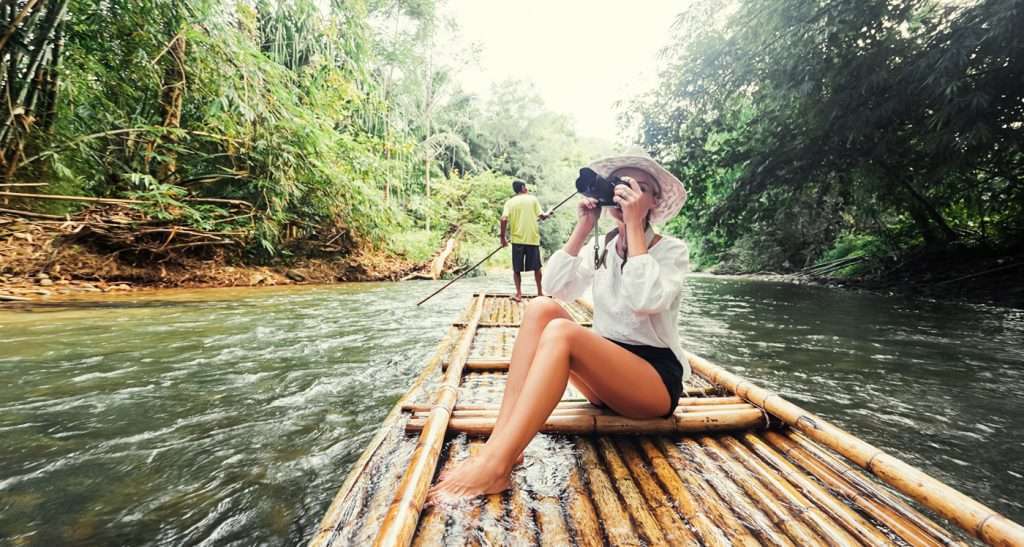Bamboo (Bambuseae) in all its variations is among the fast growing living things in the world, reaching up to two feet in 24 hours. It is strong, light, versatile, beautiful, and it floats. It would be hard to choose another material to better serve as the symbol of Asian ingenuity.
Traveling between Hoi An and Hue on the central Vietnamese coast, it was inspiring how many styles of the bamboo boat could be found, simply based on use, needs, resources and a bit of creativity. Some bamboo boats are woven into large 10 meter long vessels with a canoe form, some are the coracle shapes, large and small. Near Hue at Thuan An beach, at the mouth of the Perfume River, I spent time learning the small woven canoe, five meters at most, using almost only bamboo.
Other than a woven bamboo mat for shaping, which varies in styles and weaving patterns based on the intended design, only a few pieces are needed to make the bamboo canoe of Hue. I worked with a builder who showed me to split long pieces of giant bamboo for the gunnels, both inner and out. These circular gunnels will eventually meet at the top and with a rope along the entire length, they will wrap and pinch the bamboo mat between them.
A t-shaped stern and bow piece is made to hold the gunnel pieces together at the end. Bamboo thwarts or another strong wood will keep the form in place. Its likely that a builder, with but a single small grove of bamboo, could make plenty of these ingenious vessels.
The mat is woven using thin splits of bamboo. I saw various patterns being woven along the coast. Groups of three and four were the most common, moving diagonally. A wooden mallet is needed to pound the strips into place.
In each of the workshops I visited, a few rolls await to be shaped. Within a day, weavers can make a fine hull mat.If you are further interested in this part of the design process and regional variations, I highly recommend my helpful friend Ken Preston’s blog www.boatsandrice.com. He has been traveling Indio-China for quite sometime, documenting these wonderful traditions with an admirable passion and determination.
Shaping the hull can be done in different ways. Some regions use a hole dug into the ground. In Hue and Hoi An, bamboo stakes are placed outlining the intended design at the gunnels, much like that of the North American birch bark traditions, and with a little muscle, the bamboo can be worked into memory of its intended shape.
Adding the gunnels varies for each boat. Canoes do not have support ribs, the mat maintaining its natural shape, while the circular boats often have bent ribs overlapping to maintain strength. Using plastics, nylon cord, and various other modern materials various on each person’s craft. It is very much about whatever works.
Depending on size, the bamboo boat may be paddled with a single blade, a double kayak style blade, a small outboard motor, oars, or even the incredibly cool hand paddles.The are used for all types of fishing and transport activities along the coast and in the Perfume River Delta it feels as if they are the most common and important craft of all. They are the workhorses for this intricate water community.

